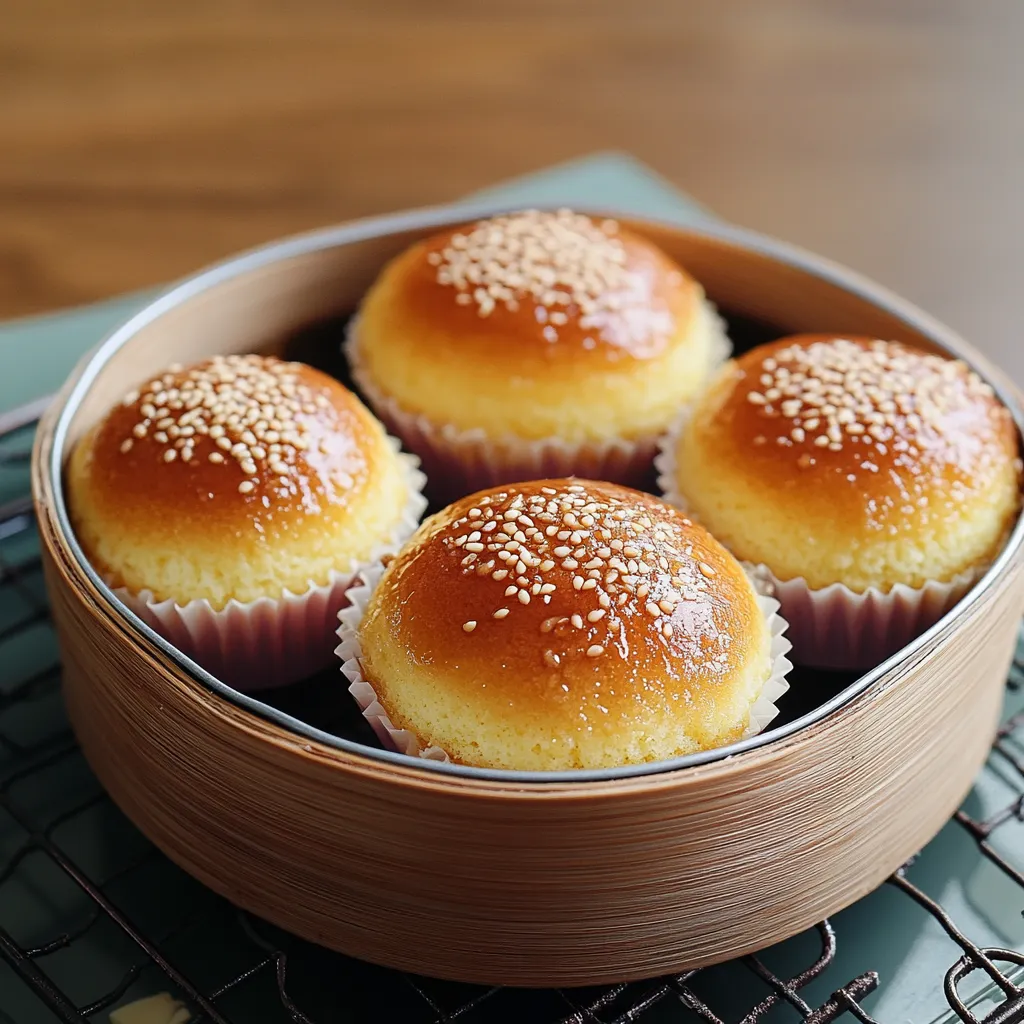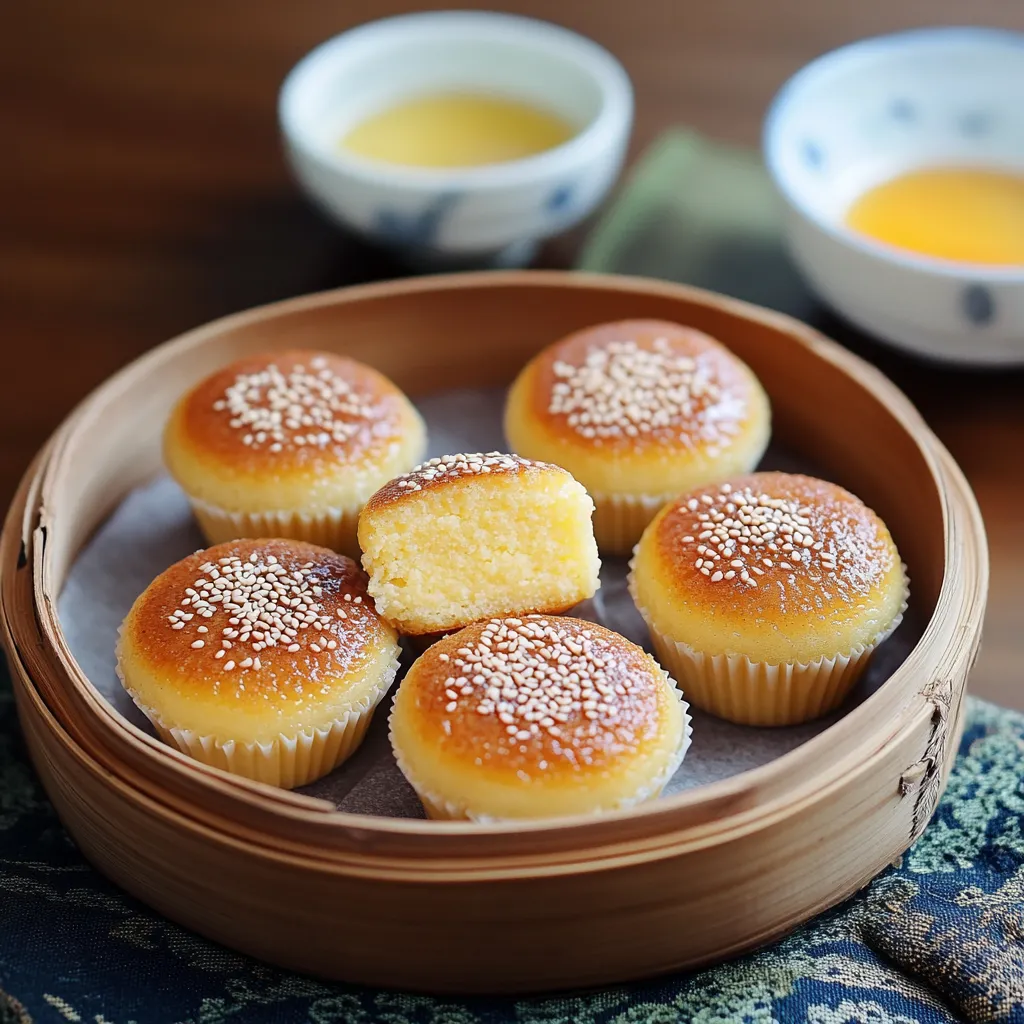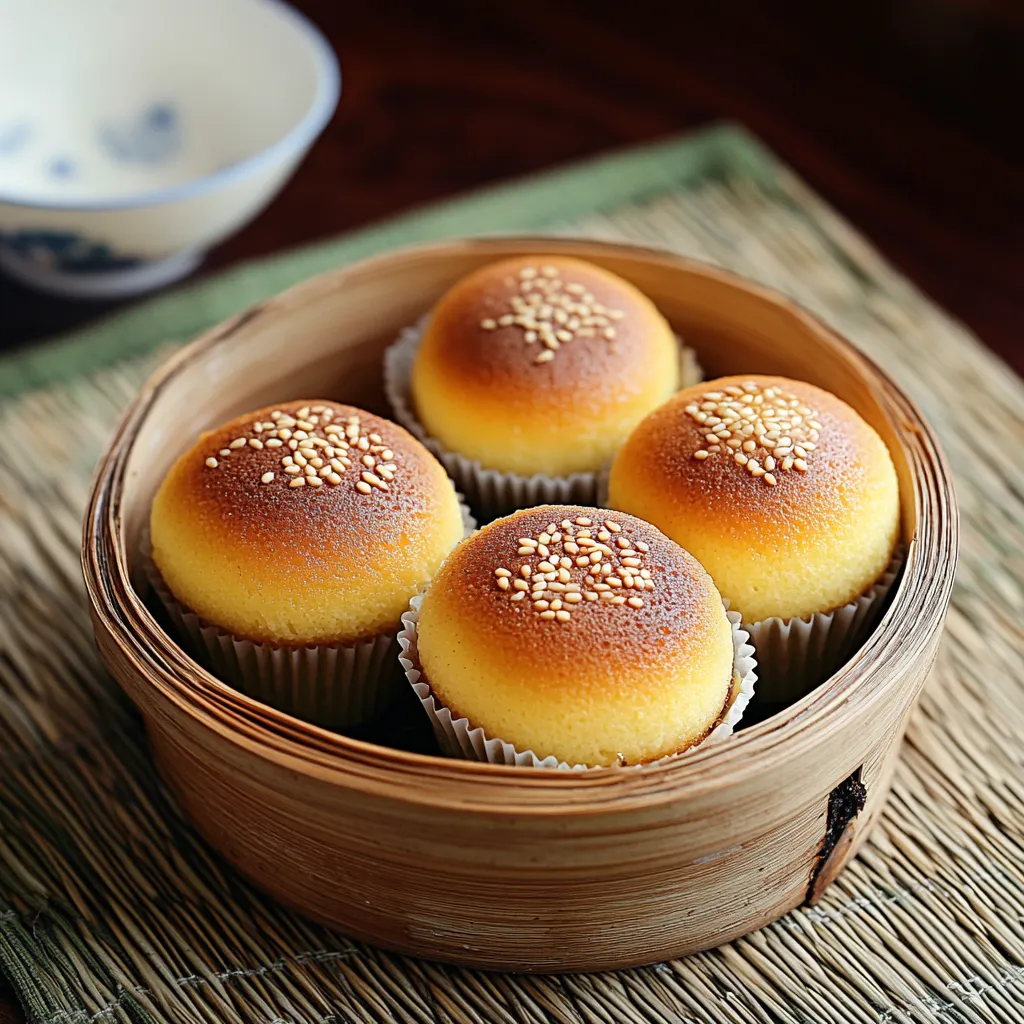 Pin it
Pin it
Traditional Chinese egg cake transports you to another time with its perfectly dense crumb and subtly sweet flavor profile that feels like a warm embrace from the past. These delightful mini cakes balance simplicity with sophistication, requiring just a handful of quality ingredients to create something truly special.
My grandmother would make these egg cakes whenever we visited her small apartment in Chinatown. The kitchen would fill with their distinctive aroma, and she'd serve them still slightly warm with jasmine tea. Years later, when I recreated them in my own kitchen, that first bite instantly transported me back to those precious childhood moments around her small table.
Essential Elements
- Cake flour: Creates a delicate, tender crumb. Look for unbleached cake flour and sift thoroughly to remove lumps.
- Fresh eggs: Provide structure and richness. Room temperature eggs incorporate more air, enhancing lift.
- Granulated sugar: Stabilizes air bubbles when beaten with eggs, providing subtle sweetness.
- Natural honey: Adds floral notes and moisture. Different honey varieties offer unique flavors.
- Neutral oil: Maintains moisture without overpowering the delicate flavor. Grapeseed or canola oil works best.
- Sesame seeds: A traditional garnish that adds nutty depth and visual appeal.
Careful Preparation
- Proper Preheating:
- Preheat your oven to 325°F (163°C) for at least 20 minutes. Lightly oil your muffin tin for easy release.
- Ingredient Preparation:
- Sift cake flour, bring eggs to room temperature, and measure honey in a lightly oiled spoon for easy pouring.
- Battering Technique:
- Whisk eggs, sugar, and honey until pale and thick. Fold in sifted cake flour carefully to retain air.
- Gentle Folding:
- Slowly drizzle in oil while folding gently. A few extra folds help prevent large air pockets.
- Portioning Precision:
- Fill muffin cups 90% full for proper rise. Sprinkle sesame seeds on top before baking.
- Attentive Baking:
- Bake for 11-12 minutes until lightly golden. Cool in the pan for 5 minutes before transferring to a wire rack.
 Pin it
Pin it
I discovered the importance of patience with these cakes after repeatedly trying to recreate my grandmother's recipe. My first attempts tasted strongly of eggs when eaten warm. When I called her, she simply laughed and said, 'You were always too impatient as a child. Let them rest until tomorrow. Good things come to those who wait.'
Cultural Significance
These humble cakes date back to the Qing Dynasty, representing one of China's first adaptations of Western baking techniques. While most traditional Chinese desserts were steamed, these cakes marked an important cultural exchange. In northern China, they are known as 槽子糕 (cáo zi gāo), referring to the molds used for baking. Southern regions simply call them egg cakes or honey cakes.
Serving Suggestions
Enjoy plain with tea or pair with fresh fruit, a dusting of powdered sugar, or a drizzle of honey. They also complement poached pears or whipped cream for an elegant dessert. Serve alongside traditional Chinese sweets during festive occasions.
Flavor Variations
For subtle twists, add orange zest, toasted sesame seeds, or a hint of almond extract. During cooler months, incorporate a touch of cinnamon or five-spice powder for warmth. Keep additions minimal to maintain the cake’s delicate character.
Preservation Techniques
Store at room temperature in an airtight container for up to five days. In warmer months, refrigerate for up to a week. Freeze for up to three months by wrapping individual cakes in plastic. Thaw overnight in the fridge before serving.
 Pin it
Pin it
Throughout my culinary journey, I’ve developed a deep appreciation for recipes that bridge cultures while staying true to their origins. These egg cakes highlight an early fusion of techniques and flavors, proving that even the simplest recipes carry historical significance.
Frequently Asked Questions
- → What makes Chinese Egg Cake different from regular muffins or cupcakes?
- Chinese Egg Cakes have a distinct texture that's denser than a cupcake but lighter than a muffin. They rely heavily on beaten eggs for structure rather than chemical leaveners, giving them their characteristic dense yet tender crumb and subtle egg flavor.
- → Can I replace the cake flour with all-purpose flour?
- Yes, but the texture won't be quite the same. If using all-purpose flour, remove 2 tablespoons from each cup and replace with 2 tablespoons of cornstarch, then sift together thoroughly to mimic cake flour's lower protein content.
- → Why do my egg cakes deflate after baking?
- This usually happens when the egg mixture isn't beaten enough initially or when the oven temperature is too low. Make sure to beat the eggs until soft peaks form and preheat your oven properly before baking.
- → Can I make these Chinese Egg Cakes ahead of time?
- Yes, these cakes keep well in an airtight container at room temperature for 2-3 days. You can also freeze them for up to a month - just thaw at room temperature before serving.
- → What can I add to these egg cakes for different flavors?
- Traditional variations include adding a teaspoon of vanilla extract or almond extract to the batter. You can also fold in lemon zest, orange zest, or even a tablespoon of matcha powder for different flavor profiles.
- → Why is it important to use room temperature eggs?
- Room temperature eggs whip up to a much greater volume than cold eggs, creating more air bubbles in the batter. This is crucial for achieving the proper texture since this recipe relies on whipped eggs rather than baking powder for lift.
